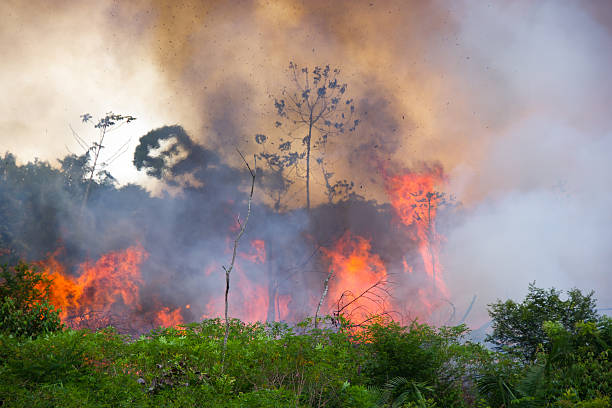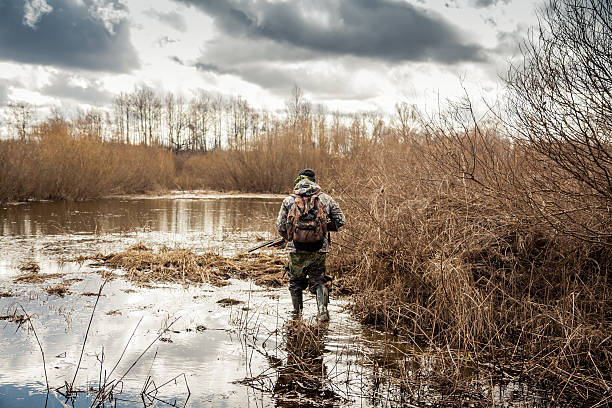The fossa, Madagascar's top hunter, is a momentous illustration of variation notwithstanding misfortune. As a flesh eating warm blooded creature, it has cut out a specialty for itself in the island's remarkable environment. In any case, in spite of its noteworthy hunting ability, the fossa is attempting to make due in a world that is quickly evolving. Living space misfortune and fracture because of deforestation and horticulture are undermining its food supply, while human-fossa clashes are on the ascent.
Environmental change is likewise modifying the appropriation of its prey species, making it harder for the fossa to track down food. However, this versatile creature isn't surrendering. In light of these difficulties, the fossa has adjusted its way of behaving, turning out to be more singular and nighttime to stay away from human contact.
Its populace might be declining, yet it stays a demonstration of the force of development and the significance of preservation endeavors to safeguard this fantastic species. As we endeavor to save the normal world, the fossa's story fills in as a strong sign of the significance of coinciding with untamed life in our quickly impacting world.
Importance of the fossa in its ecosystem
The fossa assumes an essential part in its biological system as the top hunter in Madagascar's one of a kind natural life local area. As a dominant hunter, the fossa controls the populaces of its prey species, keeping a fragile equilibrium that guarantees the drawn out manageability of the biological system.
By controlling the quantities of herbivores and different hunters, the fossa assists with keeping up with the construction and variety of the backwoods biological system, permitting different species to flourish. For instance, the fossa's predation on shrub pigs and tenrecs keeps these species from overgrazing and overbrowsing, which would prompt the debasement of natural surroundings and loss of biodiversity.
Moreover, the fossa's presence likewise affects the whole pecking order, impacting the way of behaving and populace elements of different hunters and foragers that depend on its corpses as a food source. Without the fossa, this fragile equilibrium would be disturbed, prompting unexpected ramifications for the whole biological system.
Description of the fossa's natural habitat and diet
The fossa's normal living space is the dry woodlands and spiked bushes of southern and western Madagascar, where it occupies a scope of rises from ocean level to 2,000 meters. This special climate, described by thick vegetation and restricted perceivability, is great for the fossa's single and snare ruthless way of life.
The fossa is all around adjusted to this climate, with its slim body, long tail, and sharp hooks permitting it to explore the thick undergrowth easily. Its eating routine comprises fundamentally of little to medium-sized vertebrates, like shrub pigs, tenrecs, and rodents, as well as reptiles and birds. The fossa is likewise known to search flesh and feed on leafy foods. Its eating routine is exceptionally changed and shrewd, mirroring the accessibility of prey in its natural surroundings.
Notwithstanding its essential prey species, the fossa has been noticed hunting more modest prey like lemurs, hedgehogs, and, surprisingly, youthful birds, showing its versatility and adaptability as a hunter.
Climate change and its effects on the fossa's ecosystem
Environmental change is significantly affecting the fossa's biological system, with broad ramifications for its endurance and the sensitive equilibrium of its natural surroundings. Increasing temperatures and changing precipitation designs are adjusting the dissemination and overflow of the fossa's prey species, making it more trying for the hunter to adjust and track down food.
Dry spells and heatwaves are likewise worsening the generally problematic circumstance, prompting expanded rivalry for restricted assets and decreased accessibility of safe house and environment. Subsequently, fossa populaces are declining, and their reach is contracting, representing a critical danger to the drawn out endurance of this endemic species. Besides, environmental change is likewise adjusting the organization of vegetation in the fossa's territory, making it more challenging for the hunter to explore and chase successfully.
The deficiency of reasonable environment and the downfall of prey populaces could have horrendous ramifications for the fossa's biological system, featuring the dire requirement for preservation endeavors to moderate the effects of environmental change on this exceptional and weak species.
Overview of conservation initiatives and organizations working to protect the fossa
Conservation efforts are underway to protect the fossa and its habitat, with several organizations and initiatives working together to address the threats facing this unique species.
The Fossa Conservation Program, led by the Durrell Wildlife Conservation Trust, is one such initiative, working to study and protect the fossa through research, habitat protection, and community engagement. The Madagascar Fauna and Flora Group (MF&G) is another key player, focusing on protecting the fossa's habitat and reducing human-fossa conflict through education and community-based conservation.
Additionally, the International Union for Conservation of Nature (IUCN) has listed the fossa as a species of "special concern", highlighting the need for international cooperation and action to protect this endemic species. These conservation efforts are crucial in ensuring the long-term survival of the fossa, and ongoing support is essential to safeguard its future in the wild.
The impact of climate change on the fossa's ecosystem
Environmental change is significantly affecting the fossa's biological system, with extensive ramifications for its endurance. Climbing temperatures and changing precipitation designs are adjusting the circulation and overflow of its prey species, making it harder for the fossa to adjust and track down food.
Dry spells and heatwaves are likewise intensifying rivalry for assets, diminishing asylum and natural surroundings accessibility. This has prompted declining fossa populaces, decreased range, and expanded human-fossa struggle. Environmental change is disturbing the fragile equilibrium of the fossa's biological system, undermining its actual presence.
The role of human-fossa conflict in shaping conservation efforts
Human-fossa struggle is a huge test in the preservation of the fossa. As human settlements and agribusiness extend, they infringe on the fossa's living space, prompting contest for assets and clashes among people and fossa.
Fossas are frequently compelled to adjust to these progressions by striking harvests and domesticated animals, prompting reprisal by ranchers and a resulting decrease in fossa populaces.
Preservation endeavors should resolve this issue by advancing conjunction and maintainable occupations. Local area based drives, for example, schooling and pay plans, can assist with decreasing human-fossa struggle by empowering ranchers to embrace fossa-accommodating practices and giving elective kinds of revenue. By tending to human-fossa struggle, traditionalists can safeguard both human jobs and fossa populaces, guaranteeing the drawn out endurance of this remarkable species.
Fossa Future research needs and knowledge gaps
Regardless of ongoing advances, critical examination holes stay to guarantee the drawn out preservation of the fossa. To more readily grasp fossa conduct, nature, and populace elements, further investigations are required on their eating regimen, social construction, and movement designs.
Research on fossa-rancher struggle relief systems and human-fossa concurrence is additionally critical. Moreover, information holes exist in regards to the fossa's conceptive science, including reproducing propensities and litter size. Understanding these viewpoints will illuminate successful preservation measures and observing projects. Also, hereditary exploration can assist with recognizing subspecies and decide the effect of inbreeding on populace decline.
Summary of the fossa's remarkable ability to survive in a changing world
The fossa, the world's most rapacious warm blooded creature, has exhibited wonderful versatility and strength even with natural changes.
Notwithstanding confronting living space misfortune, human-fossa struggle, and environmental change, the fossa has figured out how to get by and flourish in its local Madagascar. Its one of a kind qualities, for example, its capacity to flourish in various environments and its omnivorous eating routine, have permitted it to adjust to evolving conditions. Furthermore, its single and nighttime conduct have assisted it with keeping away from human contact and diminish struggle with ranchers.
In spite of its weakness, the fossa has figured out how to keep a moderately steady populace size, making it a surprising illustration of endurance in a quickly impacting world.










Post a Comment
0Comments